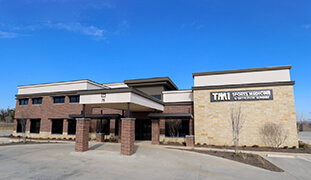
What is Kyphoplasty?
Kyphoplasty is a surgical procedure employed in the management of a compression fracture in the spine secondary to osteoporosis. Vertebral compression fractures result in a reduction in the normal vertebral height. The compression of the vertebrae results in pain, restriction of mobility, height loss, and spinal deformity. Conventionally, pain medications, rest, and bracing were commonly used for the non-surgical management of vertebral compression fractures. Kyphoplasty is a relatively new surgical procedure introduced for the management of vertebral compression fractures of the spine. The aim of the surgery is to relieve pain, stabilize the vertebra, and to restore normal height of the vertebral body.
Kyphoplasty Procedure
The patient is sedated before the procedure and then placed on the operating table, on his/her abdomen. The skin over the back is cleansed and prepared. The procedure is performed under X-ray (fluoroscopy) guidance.
In this procedure, a tube or probe is introduced into the vertebral body through a tiny incision in the back. After proper positioning is confirmed by X-ray, a drill is introduced into the tube and the vertebral body is drilled. This creates a path for the insertion of a deflated balloon which is inflated once inside the vertebra to the desired height. After a space has been created in the vertebral body by the balloon, this space is filled with orthopedic cement called polymethylmethacrylate (PMMA). The cement hardens in a few minutes, after which the probe and deflated balloon are withdrawn. This procedure restores the normal height of the vertebrae and minimizes the deformity. The skin incision is closed with surgical glue.
Vertebroplasty is very similar to kyphoplasty with the only difference being the absence of the use of a balloon. In vertebroplasty, the orthopedic cement or PMMA is inserted into the bone of the collapsed vertebra through a needle and syringe, under fluoroscopic guidance. This technique is performed to stabilize the fracture and prevent further collapse.
Post-operative Care following Kyphoplasty
Patients are usually discharged home an hour or two after the surgery. You should have a companion to drive you home. At home, you can resume your normal routine activities but should avoid lifting heavy weights. The incision needs to be kept clean and dry.
Risks and Complications of Kyphoplasty
As with any major surgery, there may be certain potential risks and complications associated with balloon kyphoplasty and vertebroplasty which include:
- Bleeding
- Infection
- Bone cement leakage
- Damage to the spinal cord or spinal nerves
- Cement embolization in the veins that can travel into the lungs, leading to coma and death (rare)










